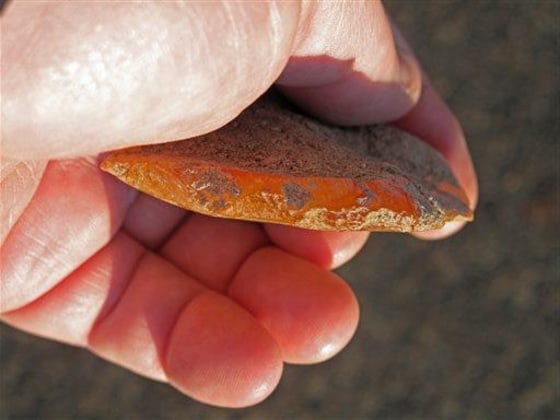GRANTS PASS, Ore. — Archaeologists have uncovered a stone tool at an ancient rock shelter in the high desert of eastern Oregon that could turn out to be older than any known site of human occupation in western North America. The find was announced Thursday by the U.S. Bureau of Land Management, which controls the land on which the site was found.
University of Oregon archaeologist Patrick O'Grady, who supervises the dig, says the Rimrock Draw Rockshelter outside Riley has not been fully excavated. But the tool, a hand-held scraper chipped from a piece of orange agate not normally found in eastern Oregon, was found about 8 inches (10 centimeters) below a layer of volcanic ash from an eruption of Mount St. Helens that has been dated to 15,800 years ago. The depth was about 12 feet (3.7 meters) below the surface.
Bureau of Land Management archaeologist Scott Thomas said that if the age of the site holds up to scrutiny, it would be the oldest west of the Rockies, and another site predating the so-called Clovis culture, once generally believed to be the first people to migrate from Asia into North America. The earliest Clovis artifacts, known for distinctive and elegant stone points, are dated to about 13,000 years ago.
O'Grady called the find "tantalizing," but he added that they want to continue digging this summer to see whether the volcanic ash covers the entire area.
Donald Grayson, professor of archaeology at the University of Washington, said the scientific community would be skeptical. "No one is going to believe this until it is shown there was no break in that ash layer, that the artifact could not have worked its way down from higher up, and until it is published in a convincing way," he said. "Until then, extreme skepticism is all they are going to get."
IN-DEPTH
- Stone Tools Give Clearer Picture of Ancient Americans
- When Did People First Come to North America?
- First Americans May Have Been Stuck for Millennia

